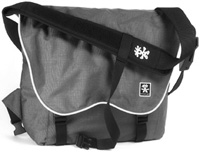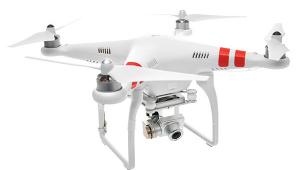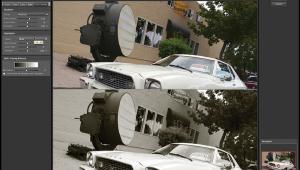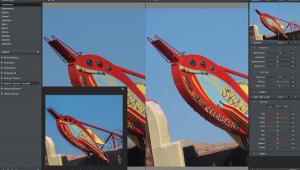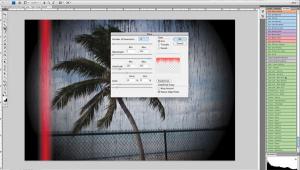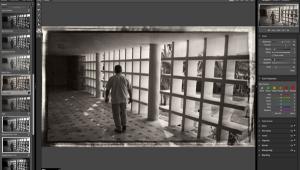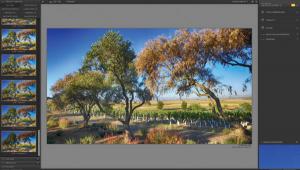Digital Innovations
Thanks For The Memories, Adding RAM Can Be A Good Solution
|
"Memory feeds imagination."--Amy Tan Ms. Tan may not have been talking about your computer's Random Access Memory (RAM), but she could have been. When adding new hardware and software to expand your digital darkroom's capabilities, new devices and applications invariably demand more memory. But there's more to it than sticking a few more DIMMs (Dual Inline Memory Modules) onto the motherboard. While some Power Macintosh models can handle up to 2GB of installed memory, individual applications can only use a maximum of 999MB under OS 9. Mac OS X allocates memory as an application requires it, so it may be able to break this barrier, but I haven't been able to actually test it yet. Lately, I've been having software and hardware problems that seemed memory related. I removed all four of the DIMMs from my Apple Power Macintosh G3 and replaced them with four brand-new 128MB modules bringing the system memory up to 512MB. What was most surprising is that the increase cost $19 per 128MB, contrasting sharply with the $400 I had paid for an additional 4MB for a Power Macintosh 8100 six years ago! When allocating memory to a specific program under Mac OS 9 and earlier, click on the application's icon and use the File>Get Info>Memory command to display a dialog box allowing you to set Minimum and Preferred sizes. You'll see a Suggested size as well, but for applications such as Adobe Photoshop 6.01 the recommended 45MB may be too small for most users. With my RAM now up to 512MB, I was unsure where to set Minimum and Preferred sizes for Photoshop, so I asked Kevin Elliott of Mac MDs (www.mdmac.com) for his advice. He suggested caution: "Check your system's memory usage with typical applications open." If you don't know how to do that, choose "About this Computer" from the Apple menu. A dialog will display how much memory the Mac OS is currently using as well as what any open application may have grabbed. For my specific usage (only), Kevin suggested I could "comfortably allocate 300-350MB to Photoshop and still have plenty left over for other applications."
|
|||
My motivation for increasing my computer's RAM was twofold: One was to get a new Photoshop compatible plug-in to perform better (more on that product later) and the other was to get the software Nikon bundles with its CoolScan IV ED film scanner to work properly. It turns out that when using the Nikon Scan 3 software plug-in (a stand-alone application also comes with the scanner), the company recommends allocating 220MB for Photoshop 6 when using the SA-21 film holder to scan negatives. Nikon further states that the Photoshop plug-in has "limitations and in certain cases may not be recommended." When I read that, I asked LaserSoft Imaging to send me a copy of their new SilverFast 5.5 software with NegaFix for the Nikon scanner (this software produces impressive scans with my Epson Expression 1680 flat-bed) but I was informed it was delayed. The reason for that delay is that the Nikon scanner does all of its negative conversion through hardware, but the new LaserSoft should be available for Nikon scanners by the time you read this. Nobody ever said a pixographer's life was easy. Bag Me, Mate
|
|||
The Laptop Bags are available in three sizes, the Very Busy Man (the large one), Wack-O-Phone (the medium one), and Roll-O-Notes (the little one). Like Goldilocks I picked the medium bag that holds either my Apple PowerBook 5300 or my wife Mary's Compaq Armada equally well. Wack-O-Phone, the Crumpler web site (www.crumplerusa.com) assures me, is the Australian name for "mooning." The case measures 13x14x4" and weighs 40 oz when empty. It features heavy-duty padding so my new iBook won't get trashed like my friend's, internal zipped pockets, and a padded shoulder strap. The internal padded pocket holds laptops up to 13x12x3". The bag is available in five different color combinations but I wimped out and ordered black with blue piping. Bolder pixographers might try the red/ blue or brown/yellow combinations. To hold my digital point-and-shoot de jour, I ordered a Jacksie camera pouch in matching black and blue. These cool pouches work with either film or digital cameras and have heavy-duty padding, a two-way belt loop, and closure by touch fasteners or a quick release buckle. There's also a clip-on shoulder/neck belt. The larger model is called PCS; the small one is Minor (for Minor White maybe?) and is available in the same interesting color choices. How cool are these Crumpler bags? Around here at the Pixel Palace, anything truly cool is almost instantly taken over by Mary. I wasn't even finished removing the tags from the Jacksie pouch before Mary grabbed it and stuffed a Canon Digital Elph S110 into it and a Delkin Devices' CompactFlash card in the pouch's front pocket and was off capturing digital images. I may never see it again. Crumpler makes all kinds of great looking and functional bags including camera bags, from the large Glamour Photo Case to top loading camera cases for SLRs with lenses attached, shoulder bags, such as the gotta-see-it-to-believe-it Wonder Weenie, and messenger bags. The company produces some accessory pouches for cell phones that you need to see for yourself on their web site. In fact, their site deserves an "A" for attitude; be sure to read the FAQ to see what I mean. JOBO Fototechnic Inc. (www.jobo-usa.com) imports Crumpler bags into the US. |
|||
Plug-In Parade FotoEffects The workmanlike interface of each plug-in features sliders or numerical entry of controls that let you produce an infinite number of effects. Most of the effects will be useful for portrait photographers, but Lastolite extends the package's capabilities with a couple of filters that can alter the shape of an image from within its frame. Their Perspective filter (Filter>FotoEffects Distortion>Perspective Control) lets you straighten leaning or "falling over" buildings in architectural photographs, while the Fisheye plug-in in the same submenu can produce a distorted fisheye effect with images made with standard lenses, but more interestingly can correct distortion created when using super-wide angle lenses. With a price tag under $100, FotoEffects will pay for itself the first time you use it. Bogen Photo distributes Lastolite studio and digital products in America and you can find more on their web site at www.bogenphoto.com. |
|||
DreamSuite It was here that I thought I had memory problems. The technical wizards at Auto F/X have assured me DreamSuite will run within Photoshop's suggested 45MB allocation, but it didn't run too fast. I had previously been told to double the suggested size for Auto F/X's Photo/Graphic Edges 4.1 plug-in, but even doubling that number did nothing to increase DreamSuite's performance. By then I'd increased Photoshop's memory allocation to 220MB to make the Nikon Scan plug-in work, but the plug-in refused to play nicely with other software. Auto F/X's visionary CEO, Cliff Weems told me that this new plug-in runs "very fast in Windows using 800MHz and 1.7GHz machines," but not well with the Macintosh G3 processor. Perhaps due to my ongoing discussions with Weems, Auto F/X recently posted an update on its web site. This 13MB updater took a while to download on my dial-up Internet connection, but solved almost all my problems. It is designed to take one-half the memory of the initial version, loads twice as fast, and features rendering speeds that are 10 times faster on a Macintosh computer. DreamSuite is a terrific new product, but be sure to check the company's web site before installing either Mac OS or Windows versions to make sure you have the latest update. As I said at the beginning of this month's column, a pixographer's life is never easy.
|
|||
SilverOxide EtchTone Little Discs, Big Images These discs are available in five colors--blueberry, tangerine, avocado, grape, and ruby--and offered in slimline jewel cases with matching colors to help make that ever-important first impression. Because of their compact size and capacity, Pocket CD-Rs are ideal for e-books, but don't put them in an iMac. Although the disc will go in, it won't come out unless you disassemble the computer. These coolest of discs are available in five packs for $14.99 and 10 packs for $24.99. You can find out more about Verbatim products at www.verbatim.com. Ink Jet Printer Update
|
- Log in or register to post comments

